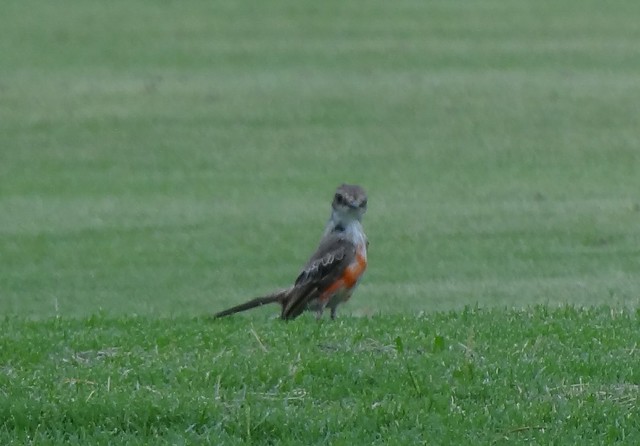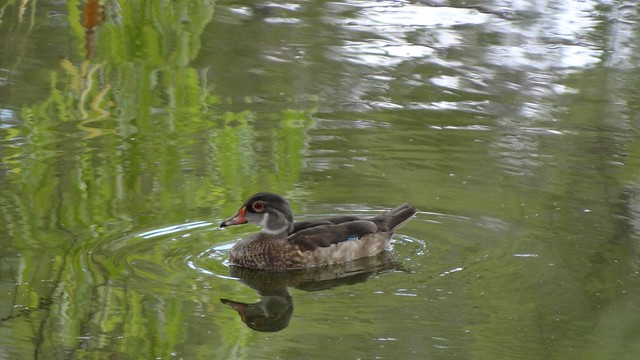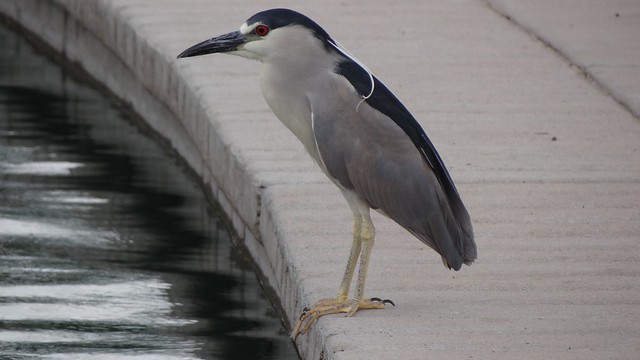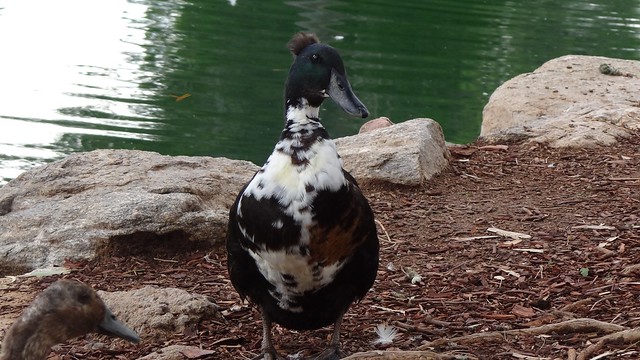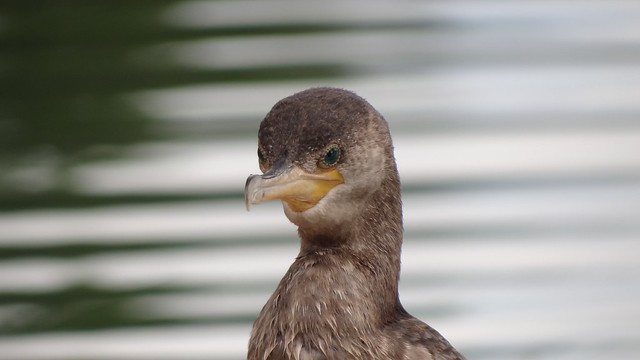Hm, how should I spend a free afternoon in Tucson?
A little birding, I suppose.
With long-anticipated meet-ups with friends arranged for midday and early evening, I decided to stay local, and so once settled in to my hotel, I zipped up to Reid Park to look for the tricolored heron that has been lingering on one of my favorite little urban ponds. It might seem silly to come from New Jersey to the Sonoran desert and set off to look for that bird of all birds, but I’ve seen only a few tricolors in Arizona, and I thought it would be a nice thing to have in the back pocket for the start of my tour with the Fontenelle Bird Club.
Not to be. I met a grim-faced group coming out as I was going in, and I looked long and hard before finally admitting that the heron just wasn’t there.
Happily, there’s always lots more to see in Reid Park. That horrible trashy pond behind the recycling center has always been good to me, and today it concealed a drake wood duck, hardly more common than the heron this time of year in this part of the world — if it’s a wild bird, of course.
Fortunately for the lister in me, this pretty little fellow stayed in the water the whole time, and if he was missing a hallux or two, I didn’t see it.
There were long-legged waders on the pond in the persons of two juvenile green herons, and a pair of American coots was a nice surprise to New Jersey eyes. I had long, lingering looks at a family of desert song sparrows, but never had so much as a glimpse at the yellow warbler singing from the willows — presumably a Sonoran yellow, but those morcomi-type birds could well be on their way south already, too. Black phoebes, a western kingbird, barn and northern rough-winged swallows, and hordes of vermilion flycatchers kept the air clear of flying bugs; I must say that the whiptails were doing a less thorough job on the ants, several of which seemed intent on returning to their hills with bite-sized bits of my ankles in their jaws.
Note for the week to come: You’re in the desert; wear socks!
There was one other golf course pond to check, the deep one on the west side at the baseball stadium. Normally I would have walked over, but the monsoon, welcome as it no doubt is, was making the afternoon air heavy to the point of oppression, so I drove across, parking at the fence in the first spot I saw a bird: a molting male vermilion flycatcher, bouncing around on the green (or the tee or the putt or whatever it’s called) like a badly sunburnt wheatear. Family groups of that species seemed to be everywhere in the park, and my afternoon’s total approached 20 individuals.
The pond was less exciting: a few more northern mallards, a black phoebe, a couple of skimming barn swallows. But why are those common ravens in the picnic area so upset?
I felt very sorry for this poor great horned owl, outnumbered and significantly outgunned by three ravens. The owl sat stolid for several minutes, but it was obviously too much when a big female Cooper’s hawk came in reinforcement. There was peace for a while after the owl flew off; it wasn’t long, though, before the whole ruckus started up again across the street, where I assume the big black birds had found their victim again.
August may not be the best time for Tucson’s urban parks, but the afternoon heat meant that the birds that were present and visible were largely unharrassed by human crowds. A surprising flock of lark sparrows had taken over one of the baseball fields, where the gravel of the infield apparently reminded them of their sandy, rocky breeding grounds.
With them was a smaller bird, an adult chipping sparrow. That species does not breed in Tucson or anywhere especially close to Tucson, but this individual was right on time for the apparent molt migration that brings the first chipping sparrows of the fall to the Sonoran desert in late July each year — as eloquent a sign of fall as the shorebirds we’ll be seeing later this week.
I knew better than to hope for exotic ardeids around the concrete ponds in the center of the park, and in fact, the only heron of any kind was this classically photogenic adult black-crowned night-heron on the sidewalk.
Much less expected was the small diving duck amid the park mallards and graylag geese; I can’t recall ever having seen a ring-necked duck in Tucson in high summer, though given that species’ abundance as a winterer at precisely sites like this, it must happen with some regularity that one is left behind.
I wonder what these wild birds must think of some of their more flamboyant pond mates.
Ring-necked ducks, of course, have been sharing lakes and puddles with weird mallards like this one for a long time, but the association is still relatively new for species like the neotropic cormorant, a fairly recent arrival to duck ponds in the Sonoran desert. This lovely pale juvenile made my afternoon, perching placid on the rocks among the barnyard birds and the great-tailed grackles.
Maybe I will bring the group to Reid Park after all, tricolor or not.
Today’s bird list, all from the recycling pond and Reid Park:
Mallard
Ring-necked Duck
Neotropic Cormorant
Green Heron
Black-crowned Night-Heron
Cooper’s Hawk
Red-tailed Hawk
American Coot
Rock Pigeon
Eurasian Collared-Dove
White-winged Dove
Mourning Dove
Great Horned Owl
Black-chinned Hummingbird
Anna’s Hummingbird
Gila Woodpecker
American Kestrel
Black Phoebe
Vermilion Flycatcher
Western Kingbird
Common Raven
Northern Rough-winged Swallow
Barn Swallow
Verdin
Northern Mockingbird
Yellow Warbler
Chipping Sparrow
Lark Sparrow
Song Sparrow
Northern Cardinal
Red-winged Blackbird
Great-tailed Grackle
Lesser Goldfinch
House Sparrow
I also saw a scissor-tailed flycatcher today — but that was on the runway in Houston.

